#7 June 1893
Explore tagged Tumblr posts
Photo










On June 7, 1893 a fire destroyed a part of the Mercado da Ribeira in Lisbon.
#Mercado da Ribeira#Time Out Market Lisboa#fire#7 June 1893#Lisbon#130th anniversary#Portugese history#interior#exterior#travel#vacation#Portugal#Southern Europe#architecture#cityscape#tourist attraction#landmark#Capilé#Pastel de nata with cinnamon#street food#ice tea#summer 2021#original photography#Lisboa
6 notes
·
View notes
Text

Dorothy Parker, August 22, 1893 – June 7, 1967.
157 notes
·
View notes
Text
Against All Odds {TVA!Loki x Female Reader Longfic}

Cee's Loki Fic Masterlist / AO3 Link
Series Summary : It was supposed to be a one-time thing : Loki was just trying to blow off some steam, and you were just trying to salvage your birthday evening. But time has a funny way of repeating itself, and now you are irrevocably entwined with each other.
Because Loki's going to turn your whole world upside down, and you're going to help him do it.
Pairing : TVA!Loki x Female Reader (Brad's date from the Zaniac movie premiere)
Tags / Content : Alternature Universe - Canon Divergence after S2 E2), Strangers to Lovers, Smut, Time Travel Shenanigans, S2 of Loki compliant-ish, Angst, Fluff, Hurt/Comfort
18+ only - Minors DNI
⊱ ─ ༓ ── ⋅•⋅⊰ ─ ⋅ ∙ ∘ ☽ ༓ ☾ ∘ ∙ ⋅ ─ ⊱⋅•⋅ ── ༓ ─ ⊰
Chapter 1 - Against the Wall {takes place on June 18th, 1977}
Chapter 2 - Against Each Other {takes place on June 25th, 1977}
Chapter 3 - Against Better Judgement {takes place on June 25th, 1977}
Chapter 4 - Hope Against Hope {takes place on June 26th, 1977}
Chapter 5 - Turn Against {takes place on June 27th, 1977}
Chapter 6 - Every Now and Again {takes place on June 27th, 1977]
Chapter 7 - Your Word Against Mine {takes place on June 30th 1977}
Chapter 8 - A Race Against Time {takes place on October 5th, 1893 / July 1st, 1977}
Chapter 9 - Two Strikes Against {takes place on December 24th, 1977}
Chapter 10 - Against the Tide {takes place on December 25th, 1977}
Chapter 11 - Up Against It {takes place inside the TVA / March 27th, 1977}
Chapter 12 - Against the Clock {takes place on December 26th, 1977 / April 3rd, 1994}
Chapter 13 - Against It All {takes place inside the TVA / February 14th, 1979}
Chapter 14 - Hold It Against Me {takes place on August 20th-27th, 1978}
Chapter 15 - For or Against {takes place on February 14th, 1979 / April 3rd, 1994}
Chapter 16 - Against Time Itself {takes place inside the TVA}
Chapter 17 - Let's Try This Again {takes place inside the TVA}
Chapter 18 - Again and Again {takes place inside the TVA}
Chapter 19 - Gainstand {takes place inside the TVA}
Chapter 20 - Epilogue {spoilers}
Click here to be added to my Loki fic tag list! 💚
#loki fanfiction#loki laufeyson#loki#loki x female reader#loki smut#loki x reader smut#loki x you#loki imagine#loki fanfic#loki odinson#loki series#marvel x reader#loki fic#cee writes#loki mcu#marvel#imagine#fanfic#smut#loki imagines#loki x yn#loki laufeyson x reader#loki x reader#against all odds#loki x y/n#loki angst
138 notes
·
View notes
Text
The napoleonic marshal‘s children
After seeing @josefavomjaaga’s and @northernmariette’s marshal calendar, I wanted to do a similar thing for all the marshal’s children! So I did! I hope you like it. c: I listed them in more or less chronological order but categorised them in years (especially because we don‘t know all their birthdays). At the end of this post you are going to find remarks about some of the marshals because not every child is listed! ^^“ To the question about the sources: I mostly googled it and searched their dates in Wikipedia, ahaha. Nevertheless, I also found this website. However, I would be careful with it. We are talking about history and different sources can have different dates. I am always open for corrections. Just correct me in the comments if you find or know a trustful source which would show that one or some of the dates are incorrect. At the end of the day it is harmless fun and research. :) Pre 1790
François Étienne Kellermann (4 August 1770- 2 June 1835)
Marguerite Cécile Kellermann (15 March 1773 - 12 August 1850)
Ernestine Grouchy (1787–1866)
Mélanie Marie Josèphe de Pérignon (1788 - 1858)
Alphonse Grouchy (1789–1864)
Jean-Baptiste Sophie Pierre de Pérignon (1789- 14 January 1807)
Marie Françoise Germaine de Pérignon (1789 - 15 May 1844)
Angélique Catherine Jourdan (1789 or 1791 - 7 March 1879)
1790 - 1791
Marie-Louise Oudinot (1790–1832)
Marie-Anne Masséna (8 July 1790 - 1794)
Charles Oudinot (1791 - 1863)
Aimee-Clementine Grouchy (1791–1826)
Anne-Francoise Moncey (1791–1842)
1792 - 1793
Bon-Louis Moncey (1792–1817)
Victorine Perrin (1792–1822)
Anne-Charlotte Macdonald (1792–1870)
François Henri de Pérignon (23 February 1793 - 19 October 1841)
Jacques Prosper Masséna (25 June 1793 - 13 May 1821)
1794 - 1795
Victoire Thècle Masséna (28 September 1794 - 18 March 1857)
Adele-Elisabeth Macdonald (1794–1822)
Marguerite-Félécité Desprez (1795-1854); adopted by Sérurier
Nicolette Oudinot (1795–1865)
Charles Perrin (1795–15 March 1827)
1796 - 1997
Emilie Oudinot (1796–1805)
Victor Grouchy (1796–1864)
Napoleon-Victor Perrin (24 October 1796 - 2 December 1853)
Jeanne Madeleine Delphine Jourdan (1797-1839)
1799
François Victor Masséna (2 April 1799 - 16 April 1863)
Joseph François Oscar Bernadotte (4 July 1799 – 8 July 1859)
Auguste Oudinot (1799–1835)
Caroline de Pérignon (1799-1819)
Eugene Perrin (1799–1852)
1800
Nina Jourdan (1800-1833)
Caroline Mortier de Trevise (1800–1842)
1801
Achille Charles Louis Napoléon Murat (21 January 1801 - 15 April 1847)
Louis Napoléon Lannes (30 July 1801 – 19 July 1874)
Elise Oudinot (1801–1882)
1802
Marie Letizia Joséphine Annonciade Murat (26 April 1802 - 12 March 1859)
Alfred-Jean Lannes (11 July 1802 – 20 June 1861)
Napoléon Bessière (2 August 1802 - 21 July 1856)
Paul Davout (1802–1803)
Napoléon Soult (1802–1857)
1803
Marie-Agnès Irma de Pérignon (5 April 1803 - 16 December 1849)
Joseph Napoléon Ney (8 May 1803 – 25 July 1857)
Lucien Charles Joseph Napoléon Murat (16 May 1803 - 10 April 1878)
Jean-Ernest Lannes (20 July 1803 – 24 November 1882)
Alexandrine-Aimee Macdonald (1803–1869)
Sophie Malvina Joséphine Mortier de Trévise ( 1803 - ???)
1804
Napoléon Mortier de Trévise (6 August 1804 - 29 December 1869)
Michel Louis Félix Ney (24 August 1804 – 14 July 1854)
Gustave-Olivier Lannes (4 December 1804 – 25 August 1875)
Joséphine Davout (1804–1805)
Hortense Soult (1804–1862)
Octavie de Pérignon (1804-1847)
1805
Louise Julie Caroline Murat (21 March 1805 - 1 December 1889)
Antoinette Joséphine Davout (1805 – 19 August 1821)
Stephanie-Josephine Perrin (1805–1832)
1806
Josephine-Louise Lannes (4 March 1806 – 8 November 1889)
Eugène Michel Ney (12 July 1806 – 25 October 1845)
Edouard Moriter de Trévise (1806–1815)
Léopold de Pérignon (1806-1862)
1807
Adèle Napoleone Davout (June 1807 – 21 January 1885)
Jeanne-Francoise Moncey (1807–1853)
1808: Stephanie Oudinot (1808-1893) 1809: Napoleon Davout (1809–1810)
1810: Napoleon Alexander Berthier (11 September 1810 – 10 February 1887)
1811
Napoleon Louis Davout (6 January 1811 - 13 June 1853)
Louise-Honorine Suchet (1811 – 1885)
Louise Mortier de Trévise (1811–1831)
1812
Edgar Napoléon Henry Ney (12 April 1812 – 4 October 1882)
Caroline-Joséphine Berthier (22 August 1812 – 1905)
Jules Davout (December 1812 - 1813)
1813: Louis-Napoleon Suchet (23 May 1813- 22 July 1867/77)
1814: Eve-Stéphanie Mortier de Trévise (1814–1831) 1815
Marie Anne Berthier (February 1815 - 23 July 1878)
Adelaide Louise Davout (8 July 1815 – 6 October 1892)
Laurent François or Laurent-Camille Saint-Cyr (I found two almost similar names with the same date so) (30 December 1815 – 30 January 1904)
1816: Louise Marie Oudinot (1816 - 1909)
1817
Caroline Oudinot (1817–1896)
Caroline Soult (1817–1817)
1819: Charles-Joseph Oudinot (1819–1858)
1820: Anne-Marie Suchet (1820 - 27 May 1835) 1822: Henri Oudinot ( 3 February 1822 – 29 July 1891) 1824: Louis Marie Macdonald (11 November 1824 - 6 April 1881.) 1830: Noemie Grouchy (1830–1843) —————— Children without clear birthdays:
Camille Jourdan (died in 1842)
Sophie Jourdan (died in 1820)
Additional remarks: - Marshal Berthier died 8.5 months before his last daughter‘s birth. - Marshal Oudinot had 11 children and the age difference between his first and last child is around 32 years. - The age difference between marshal Grouchy‘s first and last child is around 43 years. - Marshal Lefebvre had fourteen children (12 sons, 2 daughters) but I couldn‘t find anything kind of reliable about them so they are not listed above. I am aware that two sons of him were listed in the link above. Nevertheless, I was uncertain to name them in my list because I thought that his last living son died in the Russian campaign while the website writes about the possibility of another son dying in 1817. - Marshal Augerau had no children. - Marshal Brune had apparently adopted two daughters whose names are unknown. - Marshal Pérignon: I couldn‘t find anything about his daughters, Justine, Elisabeth and Adèle, except that they died in infancy. - Marshal Sérurier had no biological children but adopted Marguerite-Félécité Desprez in 1814. - Marshal Marmont had no children. - I found out that marshal Saint-Cyr married his first cousin, lol. - I didn‘t find anything about marshal Poniatowski having children. Apparently, he wasn‘t married either (thank you, @northernmariette for the correction of this fact! c:)
#Marshal‘s children calendar#literally every napoleonic marshal ahaha#napoleonic era#Napoleonic children#I am not putting all the children‘s names into the tags#Thank you no thank you! :)#YES I posted it without double checking every child so don‘t be surprised when I have to correct some stuff 😭#napoleon's marshals#napoleonic
71 notes
·
View notes
Text
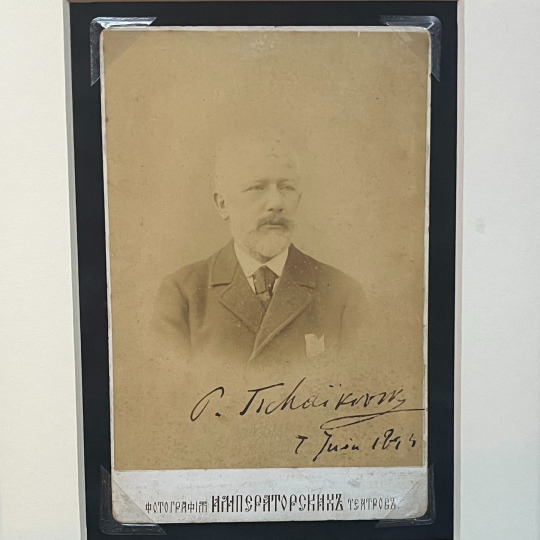
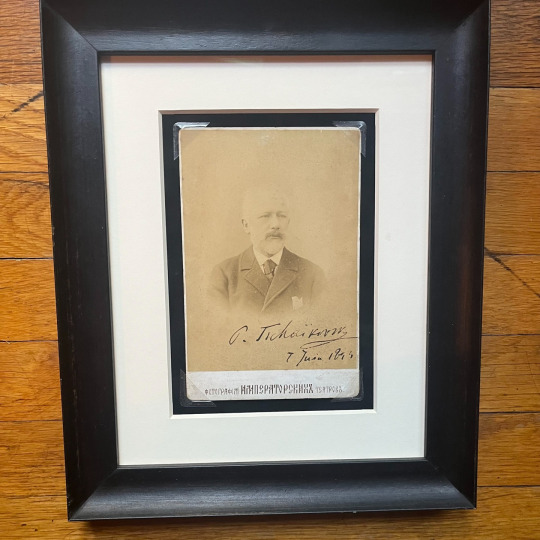

OTD in Music History: Immortal composer Pyotr Ilyich Tchaikovsky (1840 - 1893) dies in St. Petersburg. Tchaikovsky is undoubtedly the most popular Russian composer of all time. Although he has sometimes drawn scorn from critics and academics, Tchaikovsky's music has always held great appeal for the general public because of its incredible melodic inspiration, lush (and often surprising) harmonies, and colorful orchestration. Although Tchaikovsky did not seriously begin studying music until his early 20s and died in his early 50s, he composed prolifically and still managed to produce 20 choral works, 11 overtures, 11 operas, 7 symphonies, 5 suites, 4 cantatas, 3 ballets, 3 piano concertos, 3 string quartets, a violin concerto, a string sextet, and more than 100 individual smaller songs and piano pieces. Tchaikovsky's work can admittedly be uneven in quality -- but as often as not, he achieved a remarkable unity of melodic and harmonic inspiration with dramatic content and appropriate form, and his finest masterpieces easily elevate him into the first rank of history's great "classical" composers. PICTURED: An 1890’s cabinet photograph of Tchaikovsky which he signed and dated on June 7, 1893, just five months before his untimely death. Per the date of the inscription, Tchaikovsky signed this photograph while he was visiting Britain (from May 25 to June 30, 1893) to receive an honorary Doctorate from Cambridge University. His distinguished musical colleagues Camille Saint-Saens (1835 - 1921), Max Bruch (1838 - 1920), Arrigo Boito (1842 - 1918), and Edvard Grieg (1843 - 1907) (who was not able to attend due to illness) were also awarded honorary Doctorates at the same ceremony, which took place on June 13th.
“Life is beautiful in spite of everything! There are many thorns, but the roses are there, too.” -- P. Tchaikovsky “To regret the past, hope in the future, and never to be satisfied with the present: that is what I spend my whole life doing.” -- P. Tchaikovsky “Truly there would be good reason to go mad, were it not for music!” -- P. Tchaikovsky
#classical music#opera#music history#bel canto#composer#classical composer#aria#classical studies#maestro#chest voice#Pyotr Ilyich Tchaikovsky#classical musician#classical musicians#classical history#historian of music#history of music#musician#musicians#diva#prima donna
6 notes
·
View notes
Text
CRACKPOT THEORY: THE VOODOO ‘VIRGIN MARY’ IS ACTUALLY ERZULIE

Pictured: “Miss Erzulie Freda” by Andre Pierre
(Previously, I had argued that this must be Erzulie Freda, but now I no longer think that is necessarily the case.)
In Voodoo in New Orleans, Robert Tallant described how New Orleans Voodooists worshiped the Catholic saints:
“These merchants also sell pictures of saints. To certain Roman Catholic saints particular Voodoo power has been attributed: St. Michael is thought best able to aid in conquering enemies; St. Anthony de Padua is invoked for “luck”; St. Mary Magdalene is popular with women who are in love; St. Joseph (holding the Infant Jesus) is used to get a job. Many Voodoos believe a picture of the Virgin Mary in their homes will prevent illness, and that one of St. Peter (with the Key to Heaven) will bring great and speedy success in financial matters (without the Key to Heaven, St. Peter is still reliable in helping in the achievement of minor successes; the power of the picture is less, however). Pictures of the Sacred Heart of Jesus are believed to have the ability to cure organic diseases.”
SOURCE: Source: Tallant, Robert. Voodoo in New Orleans. 1946. Reprint, Gretna, La.: United Kingdom, Pelican Publishing Company, 1983.:
Many of these saints are not actually the Catholic Saints, but African-derived deities hidden under their names.
From the interview with the 75-year old Mary Washington (“Mary Ellis”), who was born in 1863*:
“That’s all I can remember. Marie Laveau used to call St. Peter somethin’ like ‘Laba.’ She called St. Michael ‘Daniel Blanc,’ and St. Anthony ‘Yon Sue.’ There was another one she called ‘On Za Tier’; I think that was St. Paul. I never did know where them names come from. They sounded Chinee to me. You know the Chinee emperor sent her a shawl? She wore it all the time, my aunt told me.”
SOURCE: Source: Tallant, Robert. Voodoo in New Orleans. 1946. Reprint, Gretna, La.: United Kingdom, Pelican Publishing Company, 1983.:
*Age and date of birth described in: Long, Carolyn Morrow. A New Orleans voudou priestess: The legend and reality of Marie Laveau. University Press of Florida, 2007.
Due to her age, the septuagenarian seems to have corrupted the pronunciation of the deities’ names. “Daniel Blanc” can be identified with Dan (Damballah), while “Laba” can be identified with Legba (Papa Legba). “Yon Sue” is probably Agasu (Miché Agoussou), while “On Za Tier” is possibly Azaka (Assonquer).
In Mythologie Vodou, Milo Marcelin identifies Maitresse Ezulie (Erzili Freda Dahomey) with the Virgin Mary. To be precise, she is identified with Our Lady of Sorrows (Mater Dolorosa), and two “Black Madonnas”: The Virgin of Altagracia, and Our Lady of Mount Carmel.
“Maitresse Ezili est identifiée à la Mater Dolorosa, représentée, dans les chromos catholiques, sous les traits d'une jolie femme qui porte des colliers en perles et en or, beaucoup de bracelets et de bagues en argent et en or, et qui a le coeur transpercé d'une épée en or. Elle est aussi identifiée à ces deux Vierges noires: Altagrace, appelée aussi Vierge d'Higuey (nom d'une ville Dominicaine), et Notre Dame du Mont-Carmel.”
SOURCE: Marcelin, Milo. Mythologie vodou: rite arada, vol. I. Haiti, Éditions haïtiennes, 1949, p. 77.
An intriguing bit of evidence is mentioned in Jeffrey E. Anderson’s Voodoo: An African American Religion.
In her thesis, Kendra Cole discovered a pencil drawing on the upper right corner of a document from the 19th century: The State of Louisiana v. Louise Johnson, New Orleans: City Archives, June 7, 1893.
The drawing can be viewed here, on page 31: https://aquila.usm.edu/honors_theses/658
It is not an exact match, but resembles Erzulie’s vèvè, as portrayed by Andre Pierre (shown above) and identified by Maya Deren in the 20th century.
See: Deren, Maya. Divine Horsemen : The Living Gods of Haiti. New Paltz, NY: McPherson, 1983 (originally published in 1953), p. 260: https://archive.org/details/divinehorsemenli00dere/page/260/mode/2up
Erzulie Dantor is also identified with the Virgin Mary, but her vèvè is not a match. See: https://haitianartsociety.org/ezili-dantor
Cole notes:
“My research in New Orleans was the first time the case had been opened since it was deposited; therefore, the probability of someone else representing the practice and drawing the symbol is doubtful.”
SOURCE: Cole, Kendra, "The State and the Spirits: Voodoo and Religious Repression in Jim Crow New Orleans" (2019). Honors Theses. 658. https://aquila.usm.edu/honors_theses/658
However, Anderson cautions:
“Unfortunately, the drawing is of uncertain age and origin and has no clear relevance to the case with which it associated, rendering it possible that the resemblance is simple chance.” (footnote 88)
SOURCE: Anderson, Jeffrey E. Voodoo: An African American Religion. LSU Press, 2024.
Indeed, the symbol might not be related to the lwa Ezili, but African in origin. For example, a similar heart-shaped symbol appears in the following photograph from 1900:
Schomburg Center for Research in Black Culture, Jean Blackwell Hutson Research and Reference Division, The New York Public Library. "Le roi d'Allada." The New York Public Library Digital Collections. 1900. https://digitalcollections.nypl.org/items/510d47de-07a3-a3d9-e040-e00a18064a99
As suggested by the name “Ezili Freda Dahomey”, Erzulie’s originates in the West African vodún Azili:
“An enslaved woman from Agonli-Houegbo, east of Abomey, established a shrine for the spirit Azili in the Tové neighborhood. Azili is the namesake of Haiti’s Èzili spirit family. The Dahomian army sold the woman in Hueda during the reign of Agaja, where she ended up remaining...Given Èzili’s importance in Haiti’s Rada and Petwo Rites, the narrative of the spirit’s origin in Dahomey and implantation in Hueda after 1720 suggests that the Èzili spirits have a Dahomian or Mahi origin.” (p. 73)
“Some have claimed that Ezili is a Haitian spirit (Dayan 1995, 58). However, the spirit Azlì or Azili is still served today in the Fon language area of Benin. Azlì dwells in the waters of Lake Azili that surround the island of Agonve, located on the left bank of the Oueme River (Brand 2000b, 7). In addition to their common traits, major differences include leprous male manifestations of Azlì in Fon culture (Tossounon 2012).” (pp. 169-170)
SOURCE: Hebblethwaite, Benjamin. A transatlantic history of Haitian Vodou: rasin figuier, rasin Bwa Kayiman, and the Rada and Gede Rites. Univ. Press of Mississippi, 2021.
See also: Daniels, Kyra Malika. "An Assembly of Twenty-One Spirit Nations." Africa and Its Historical and Contemporary Diasporas (2023): 67.
Worship of St. Peter and the Virgin Mary were prominent features of New Orleans Voodoo.
In an interview from the Federal Writer’s Project, Charles Raphael (“Raoul Desfrene”, born ca. 1868) described how Marie Laveau’s altar for “good work” featured statues of the Virgin Mary and Saint Peter:
Raoul Desfrene, a “French Negro” of 77, remembered Marie II well and attended some of her rites when he was a boy of about fourteen. What impressed him most was the jewelry he said she wore, which included, besides the ponderous gold earrings, diamond and ruby clasps in her scarlet-and-blue tignons, many rings set with diamonds and other precious stones, a huge horseshoe brooch of diamonds and a heavy gold bracelet on each arm. “She sure used to dress up,” he said.
He dismissed Marie I with, “There was an old lady living there, but nobody paid her no mind.” Raoul enjoyed describing the home of the Laveaus. According to him there was an altar for “good luck and good work” in the front room. It was covered with a white cloth and held a statue of the Virgin and one of Saint Peter. Raoul recalled one of another saint, a Saint Marron, who, he explained, “was a colored saint white people don’t know nothing about. Even the priests ain’t never heard of him ’cause he’s a real hoodoo saint.”
SOURCE: Tallant, Robert. Voodoo in New Orleans. United States, Pelican Publishing, 1984. Originally published in 1946.
If St. Peter was Papa Legba, it is plausible that the Virgin Mary was Erzulie, due to her prominence in Haitian Vodou as the divine feminine principle.
In Haitian Vodou, Milo Rigaud emphasized the importance of Damballah, Legba, and Erzulie, where the three form a holy trinity in the form of a triangle (“le triangle��):

Legba is figured as a divine masculine prototype, while Erzulie is figured a divine feminine prototype:
Dans le voudoo, Legba origine et prototype mâle du voudoo, est donc le soleil qui préside aux rites, tandis qu'Erzulie, origine et prototype femelle, en est la lune. Legba en est le Christ et Erzulie la Vierge. Les autres mystères viennent à leur suite, par ordre hiérarchique.
TRANSLATION:
In Vodou, Legba - male origin and prototype of Vodou - is the sun who presides over rites, while Erzulie - female origin and prototype - is the moon. Legba is the Christ and Erzulie the Virgin. The other mystères follow them, in hierarchical order.
SOURCE: Rigaud, Milo. La tradition voudoo et le voudoo haïtien: son temple, ses mystères, sa magie. FeniXX, 1953. https://original-ufdc.uflib.ufl.edu/AA00002240/00001
SEE ALSO: Rigaud, Milo. Secrets of voodoo. City Lights Books, 1985. French edition by Editions Niclaus 1953. Accessible here: https://archive.org/details/secretsofvoodoo00riga/mode/2up
This mirrors the importance of Saint Peter and the Virgin Mary in Louisiana Voudou.
Additionally, “Mama You” might be referring to one of the Ezili.
This is what is known about “Mama You”:
“Finally, some divinities survive only as names recorded in old documents, while others were probably no more than creations of imaginative authors. Mama You is one of the former, with her lone mention being a brief reference in a 1939 Federal Writers’ Project oral history. The only details supplied by the document are that she was “the mother of the child Jesus” and that she would sometimes answer from the ground when called by Marie Laveau.”
SOURCE: Anderson, Jeffrey E. Voodoo: An African American Religion. LSU Press, 2024.
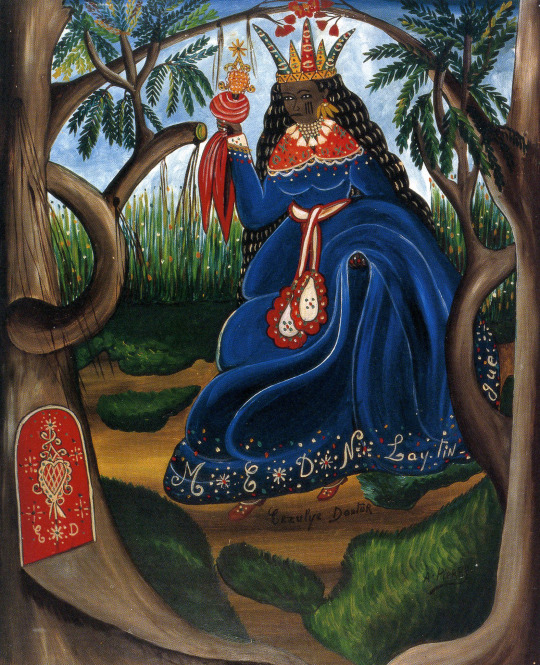
Pictured: The protective mother, “Erzulie Dantor” by Andre Pierre
In Haitian Vodou, Ezili is sometimes referred to as “Manman” (as in, “Ezili bel Manman”, “Manman cherie” “Manman lavi” etc...) This is especially true for the protective mother Manman Ezili Danto. Words of praise for Ezili (especially, “Manman Danto”) sometimes refer to her as “Manman Ou”; there are many examples of this that can easily be found on the internet.
Just a hypothesis, but “Mama You” might be derived from “Manman Ou”, or part of a sentence that goes “Mama, You…” where “Mama” refers to (Mama) Ezili. In other words, “Mama You” might not be the name of a spirit but words of praise for Ezili - possibly, but not necessarily Ezili Danto.
In Lapriye Ginen, there is a lwa called “Manman Wou”, who is part of the Ezili famille. Another possibility is that "Mama You" is derived from this "Manman Wou".
SOURCE: Beauvoir, Max. Lapriyè Ginen. Haiti, Edisyon Près Nasyonal d'Ayiti, 2008.
Benjamin Hebblewaithe reproduced Beauvoir’s list of lwa here: http://ufdcimages.uflib.ufl.edu/AA/00/02/68/96/00001/Historical%20Linguistic%20Dimensions%20of%20Spirit%20Migration%20in%20Haitian%20Vodou.pdf
This is nothing definitive; I could have this wrong.
***
Previously, I proposed a theory that the Saint-Domingans may have brought a version of Erzulie who was both Erzulie Freda and Erzulie Dantor, like so:
“While I previously argued that this must be Erzulie Freda Dahomey, I have since realized that my logic was not entirely consistent. In Haitian Vodou, there exists a massive pantheon, where the lwa can be categorized by famille . “Erzulie” is actually a famille of lwa , where Erzulie Dantor is often described as the Petwo counterpart to Erzulie Freda Dahomey. (others categorize Erzulie Dantor as Rada and Erzulie Freda Dahomey as Danwonmen ) In the historical record of New Orleans, there is no evidence of an organization of Voudou spirits by famille . Petwo counterparts to Rada lwa - such as Damballah la Flambeau, Erzulie Dantor, and Maitre Carrefour - are absent.
Papa Lébat (Louisiana Voudou) might capture an earlier version of Papa Legba (Haitian Vodou), where he is both Atibon Legba and Maitre Carrefour. If Erzulie really was incorporated into Louisiana Voudou, it is possible she was both Erzulie Freda Dahomey and Erzulie Dantor.”
Upon reflection, I realize this theory doesn’t actually make sense.
The emergence of Erzulie Dantor can be dated to Bwa Kayiman. The Saint-Domingans fled to New Orleans years after this event. It is very unlikely that Erzulie Dantor would have merged with Erzulie Freda during this time window.
Because the historical record is so sparse, there is a lot of uncertainty here. But it seems more sensible that the Saint-Domingans would have brought something resembling Azili and possibly Erzulie Freda Dahomey, if they brought a version of Erzulie with them at all. In other words, my previous speculation that this version of Erzulie would be both Erzulie Freda and Erzulie Dantor is probably wrong.
3 notes
·
View notes
Text
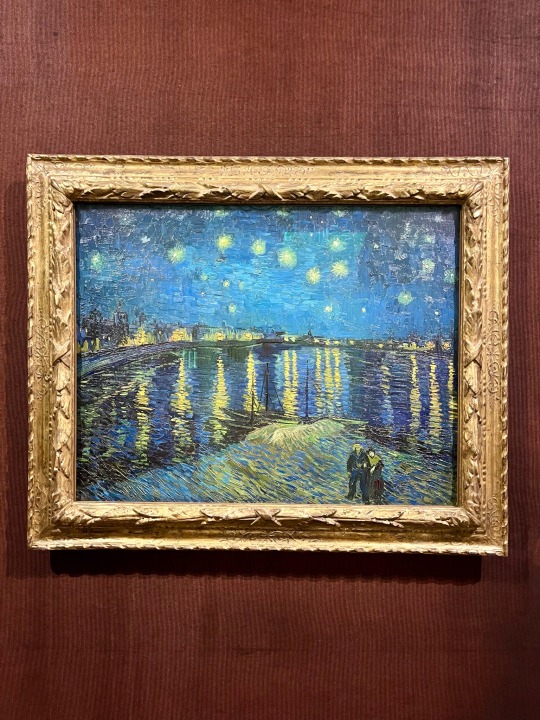

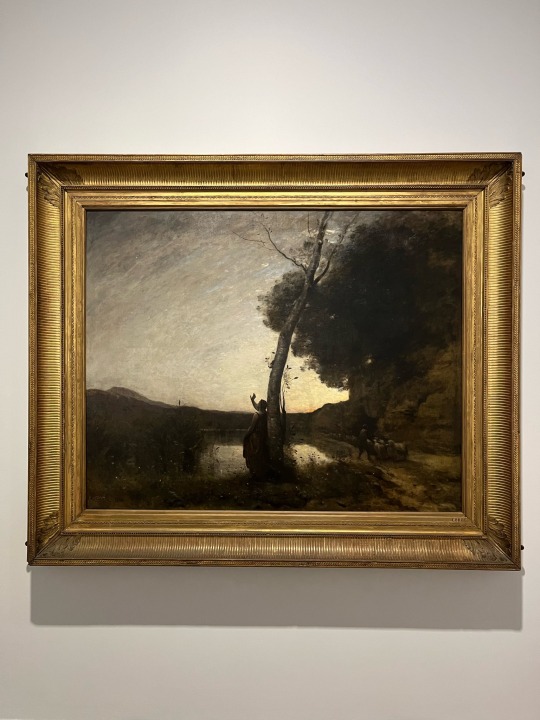
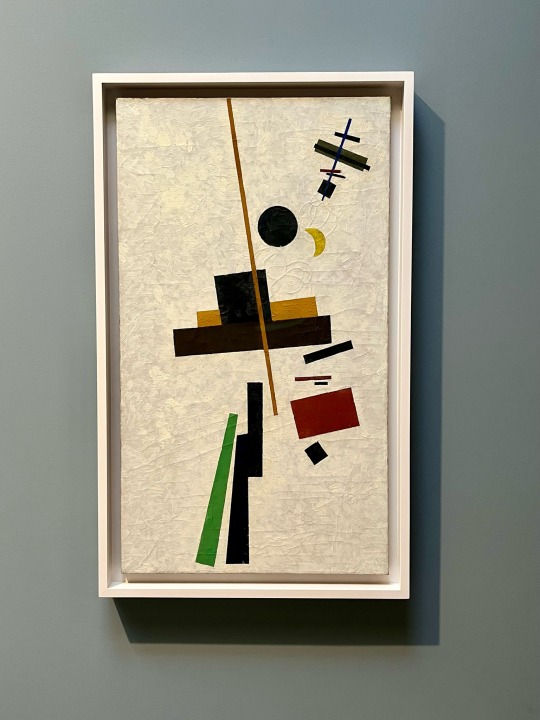
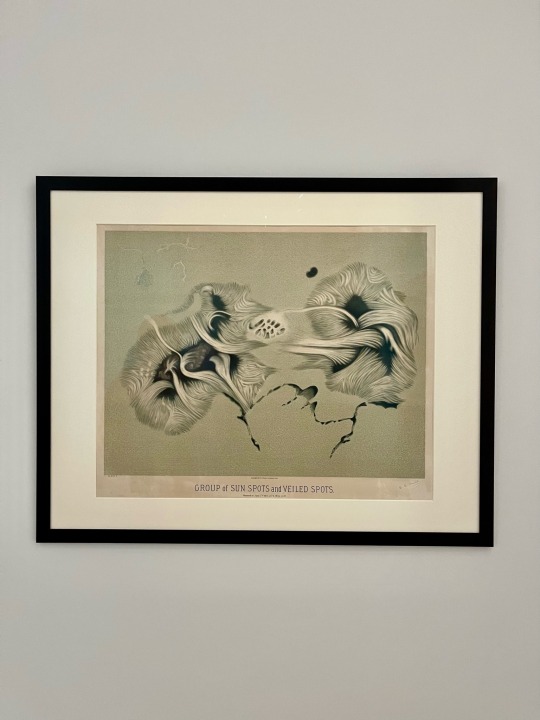
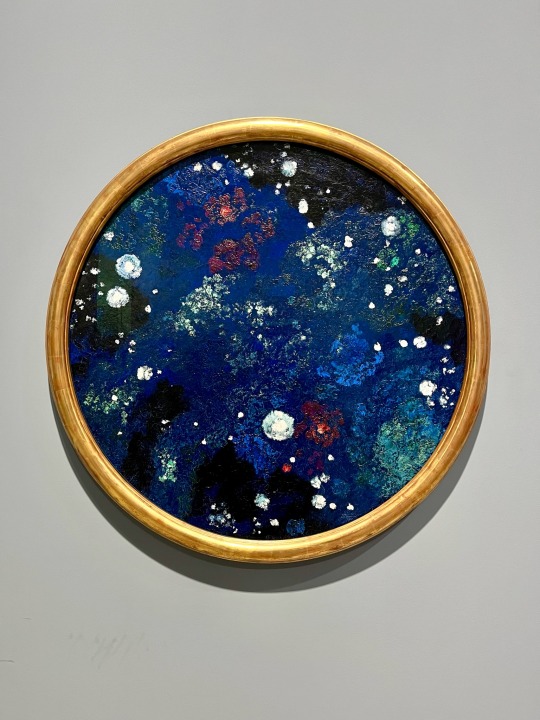
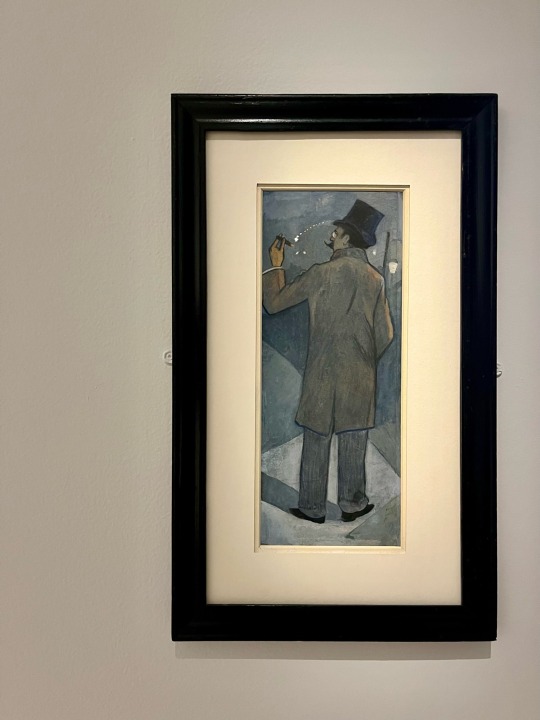
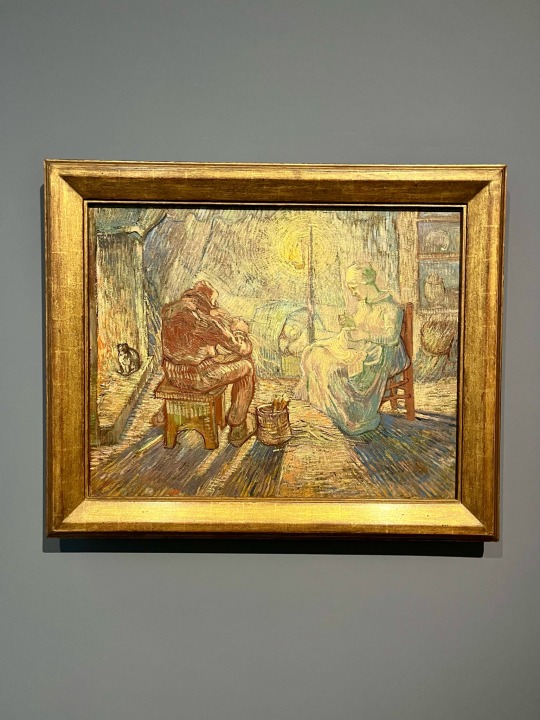

July 25, 2024. Last week I was going on about how I wish field trips were a more regular thing in adulthood. Lo and behold, this week I went to Arles with three museum friends and can assure you, the whole field trip idea is even better when it's outside the work context.
We went specifically to see the exhibition Van Gogh and the Stars at the Fondation Van Gogh. The star (ha) painting was Van Gogh's Starry Night Over the Rhone, a loan from the Musée d'Orsay as part of the 150th anniversary of impressionism, an event being marked all over France, not just in Normandy. The painting's presence in this exhibition is special because this is the first time it's being shown since its creation in Arles 136 years ago!
The exhibition is (surprisingly) large but there are only two paintings and one drawing by Van Gogh himself, all the other works are by other artists on the theme of the stars and all the subcategories you can probably think of. So the name of the expo is kind of clickbaity but overall, it's still an impressive exhibition.
Here's a very small selection of works visible at the expo:
Vincent Van Gogh (1853-1890), La nuit étoilée sur le Rhône, 1888, oil on canvas, Paris, Musée d'Orsay.
?
Camille Corot (1796-1875), L'étoile du Berger, 1864, oil on canvas, Toulouse, Musée des Augustins.
Kasimir Malevitch (1879-1935), Construction cosmique magnétique, 1916, oil on canvas, Private collection.
Étienne Léopold Trouvelot (1827-1895), Group of Sun Spots and Veiled Spots, Observed on June 17th 1875 at 7 h. 30 m. A.M., 1881, print, New York, New York Public Library.
Augusto Giacometti (1877-1947), Ciel étoilé (Voie lactée), 1917, oil on canvas, Chur, Bündner Kunstmuseum.
Frédéric-Auguste Cazals (1865-1941), Jean Moréas rallumant son cigare aux étoiles, 1893, gouache on paper, Private collection.
Vincent Van Gogh (1853-1890), Veillée (d'après Millet), 1889, oil on canvas, Amsterdam, Van Gogh Museum.
Vassily Kandinsky (1866-1944), Bleu, 1927, oil on board, New York, Museum of Modern Art.
#phd life#studyblr#art history#arles#day in the life#south of france#museums#100 days of productivity#spilled thoughts#field trip#travelblr#vincent van gogh#museum work
4 notes
·
View notes
Text

L. Glenn Switzer Contractor 1930 (Photo taken April 29, 2024 on Glenalbyn Dr. & Glenmuir Ave.)
According to the Los Angeles Times, L. Glenn Switzer died at the age of 96 on July 11, 1990, so he was born in either 1894 or 1893. He started "the first ready-mix concrete company in Southern California" in Pasadena in 1930. The company, Transit Mixed Concrete Co., worked "at construction sites throughout Los Angeles, Orange, Riverside, San Bernardino and Imperial counties," in addition to manufacturing concrete blocks and panels. He was a Quaker and was "president of the national Conference of Quaker Men" in 1954" ("L. Glenn Switzer; Formed Ready-Mix Concrete Firm." Los Angeles Times, July 22, 1990.

In 1941, L. Glenn Switzer was the manager of Transit Mixed Concrete Co. They had multiple locations including 1000 North La Brea in Los Angeles, 3492 E Foothill Blvd. in Pasadena, and 780 Union Pacific Place, which doesn't currently exist but I think may be in Commerce, CA (Los Angeles City Directory 1941, Los Angeles City Directory Co., 1941).
In an advertisement in 1945, Transit Mixed Concrete Co described themselves as "Pioneers of Transit-Mixed Concrete in Southern California" (Southwest Builder and Contractor, Volume 106, F. W. Dodge Company, 1945).
According to Switzer v. Commissioner of Internal Revenue, United States Tax Court, June 30, 1953, 20 T.C. 759 (U.S.T.C. 1953), L. Glenn Switzer and Howard A. Switzer were partners in the company in 1944-45. Their respective wives were Ida H. and Florence M. Apparently they didn't commit fraud with intent to evade tax, but the husbands were deficient due to negligence.
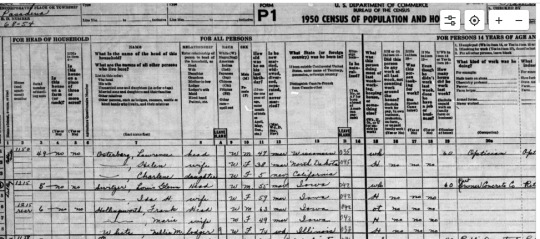
We learn from Find a Grave that L. was Lewis. He was born in Iowa in on June 26, 1894 and died in L.A. County on July 11, 1990. He is buried in Mountain View Cemetery and Mausoleum in Altadena, CA. His wife, Ida, was born in Iowa and they married on December 29, 1915 in Marshall, Iowa. They had at least two sons (Elmo Glenn, Eugene Lewis) and one daughter (Mayme Elizabeth). She lived in Pasadena in the 1940 and 1950 censuses. She died on October 18, 1987 and was also buried in Mountain View Cemetery and Mausoleum in Altadena, CA.

Howard Allison Switzer was Lewis's brother (they also had four other siblings: Elias Claire, Gladys Lucile, Richard Kent, and Florence Eliza) and co-founder. He was born on July 30 or 31, 1908 in Ladora, Iowa and died on January 7, 1997 in Los Angeles, CA. He is also buried at Mountain View Cemetery and Mausoleum in Altadena, CA (Find a Grave). Their parents were Richard Martin Switzer and Carrie Estella Lewis. (The photo above is Howard in the 1920s, probably in Long Beach, CA, and was submitted to Find a Grave by 'jmb'.) According to his obituary in the Los Angeles Times, he had moved to Long Beach, CA in 1920 with his parents and sister. "He joined his father and older brother in their concrete contracting company after graduating from Long Beach High School." This company was a predecessor to Transit Mix Concrete Company, which, according to the same obituary, was "credited with using the first concrete mixer trucks, which prepare the concrete to be poured once it gets to the job site" (January 9, 1997). Howard moved to Pasadena in 1932 and married Florence.
She lived to 105 and had lived her whole life in Pasadena, CA! They had four sons: Forrest, Roy, Marshall, and Norman. She was "known as Flossie to most of her friends." ("Florence Switzer Obituary," Pasadena Star-News).
Other sources:
The Tax Fortnighter Annual, Fallon Publications, 1954
2 notes
·
View notes
Text
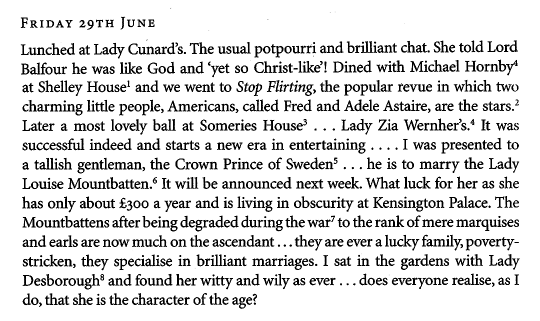
Henry ‘Chips’ Channon: The Diaries (Vol. 1), 1918-38, entry for 29th June 1923
— Friday 29th June Lunched at Lady Cunard’s. The usual potpourri and brilliant chat. She told Lord Balfour he was like God and ‘yet so Christ-like’! Dined with Michael Horby¹ at Shelley House² and we went to Stop Flirting, the popular revue in which two charming little people, Americans, called Fred and Adele Astaire, are the stars.³ Later a most lovely ball at Someries House⁴ ... Lady Zia Wernher’s.⁵ It was successful indeed and starts a new era in entertaining .... I was presented to a tallish gentleman, the Crown Prince of Sweden⁶ ... he is to marry the Lady Louise Mountbatten.⁷ It will be announced next week. What luck for her as she has only about £300 a year and is living in obscurity at Kensington Palace. The Mountbattens after being degraded during the war⁸ to the rank of mere marquises and earls are now much on the ascendant ... they are ever a lucky family, poverty-stricken, they specialise in brilliant marriages. I sat in the garden with Lady Desborough⁹ and found her witty and wily as ever ... does everyone realise, as I do, that she is the character of the age?
—
1. Michael Charles St John Hornby (1899-1987), son of St John Hornby, was the founding partner of WH Smith.
2. The Hornby family’s house in Chelsea.
3. Frederick Austerlitz (1899-1987), who took the name Fred Astaire, was an American actor, dancer and singer who achieved worldwide fame in the 1930s in a series of Hollywood musicals renowned for their dance routines; and his sister Adele Marie (1896-1981), with whom he began a vaudeville act as children as 1905, when they changed their name to Astaire. By 1923 they had a Broadway act, which they were touring in London.
4. A Crown State property rented by the Wernhers in Regent’s Park, designed by John Nash and damaged by bombing during the Second World War. It was demolished in 1958.
5. Countess Anastasia Mikhailovna of Torby (1892-1977), elder daughter of the Grand Duke Michael Mikhailovich of Russia, and therefore a great-granddaughter of Tsar Nicholas I. She married, in 1917, Harold Wernher (1893-1973), later 3rd Bt. She was granted the rank and precedence of an earl’s daughter after her marriage and stopped using her Russian title, being known as Lady Zia Wernher thereafter.
6. Oscar Fredrik Wilhelm Olaf Gustaf Adolf (1882-1973), from 1950 King Gustaf VI Adolf of Sweden. He was the widower of Princess Margaret of Connaught (1882-1920), whom he had married in 1905; she was the cousin of King George V, and had died suddenly while eight months pregnant with her sixth child. 7. Louise Alexandra Marie Irene Mountbatten (1889-1965), previously Princess Louise of Battenberg, married the Crown Prince of Sweden (vide supra) in 1923, and was Queen Consort of Sweden from 1950. She was daughter of Prince Louis of Battenberg, who became 1st Marquess of Milford Haven when renouncing the German titles in 1917. She had earlier turned down proposals from King Manuel II of Portugal and had been secretly engaged to Prince Christopher of Greece, who was unable to marry her because he had no money; a second engagement was to Stuart Hill, an artist, whom she met while nursing in the Great War and who turned out to be homosexual. 8. There was a protracted debate between Lloyd George, King George V and Lord Stamfordham, the King’s private secretary, in 1917 about the titles to be bestowed on German members of the King’s family who had pledged allegiance to him and had been prepared to forfeit their German ranks. The King was cautioned against granting too many titles and to avoid bestowing any dukedoms. The Mountbatten marquessate was a compromise and their rise would indeed be unstoppable, with the surname of members of the House of Windsor becoming Mountbatten-Windsor in 1960, thirteen years after the marriage of the future Queen Elizabeth II to Philip Mountbatten. 9. Ethel ‘Ettie’ Fane (1867-1952), married in 1887 William Henry Grenfell (1855-1945), 1st Baron Desborough, a former Liberal MP who had joined the Conservatives in 1893 over his disagreement with the second Home Rule Bill for Ireland. Their three sons (qqv) predeceased them, two killed in the Great War and a third in a car crash.
#chips channon#channon diaries#1923#1920s#emerald cunard#arthur balfour#michael hornby#fred astaire#adele astaire#zia wernher#gustaf vi adolf#louise mountbatten#ettie desborough#🕰️
7 notes
·
View notes
Text

Dorothy Parker in 1924, photographed in the backyard of her New York residence — Source.
Dorothy Parker (née Rothschild; August 22, 1893 – June 7, 1967) was an American poet, writer, critic, and satirist based in New York; she was known for her wit, wisecracks, and eye for 20th-century urban foibles. Via Wikipedia

Parker, c. 1910s-1920s
3 notes
·
View notes
Photo
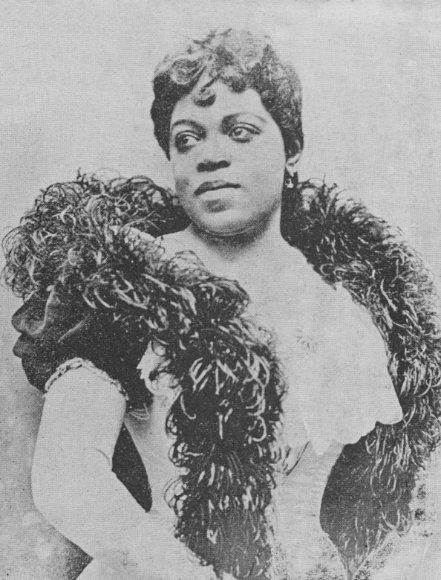

Matilda Sissieretta Joyner Jones, known as Sissieretta Jones, (January 5, 1868 or 1869[1] – June 24, 1933[2]) was an African-American soprano. She sometimes was called “The Black Patti” in reference to Italian opera singerAdelina Patti. Jones’ repertoire included grand opera, light opera, and popular music.[3]
Matilda Sissieretta Joyner was born in Portsmouth, Virginia, United States, to Jeremiah Malachi Joyner, an African Methodist Episcopal minister, and Henrietta Beale.[2] By 1876 her family moved to Providence, Rhode Island,[4]where she began singing at an early age in her father’s Pond Street Baptist Church.[2]
In 1883, Joyner began the formal study of music at the Providence Academy of Music. The same year she married David Richard Jones, a news dealer and hotel bellman. In the late 1880s, Jones was accepted at the New England Conservatory of Music.[1] On October 29, 1885, Jones gave a solo performance in Providence as an opening act to a production of Richard IIIput on by John A. Arneaux‘s theatre troupe.[5] In 1887, she performed at Boston’s Music Hall before an audience of 5,000.[2]
Jones made her New York debut on April 5, 1888, at Steinway Hall.[1] During a performance at Wallack’s Theater in New York, Jones came to the attention of Adelina Patti’s manager, who recommended that Jones tour the West Indies with the Fisk Jubilee Singers.[2] Jones made successful tours of the Caribbean in 1888 and 1892.[1]
In February 1892, Jones performed at the White House for PresidentBenjamin Harrison.[2] She eventually sang for four consecutive presidents — Harrison, Grover Cleveland, William McKinley, and Theodore Roosevelt— and the British royal family.[1][2][3]
Jones performed at the Grand Negro Jubilee at New York’s Madison Square Garden in April 1892 before an audience of 75,000. She sang the song “Swanee River” and selections from La traviata.[3] She was so popular that she was invited to perform at the Pittsburgh Exposition (1892) and the World’s Columbian Exposition in Chicago (1893).[4]
In June 1892, Jones became the first African-American to sing at the Music Hall in New York (renamed Carnegie Hall the following year).[1][7] Among the selections in her program were Charles Gounod‘s “Ave Maria” and Giuseppe Verdi‘s “Sempre libera” (from La traviata).[1] The New York Echowrote of her performance at the Music Hall: “If Mme Jones is not the equal of Adelina Patti, she at least can come nearer it than anything the American public has heard. Her notes are as clear as a mockingbird’s and her annunciation perfect.”[1] On June 8, 1892, her career elevated beyond primary ethnic communities, and was furthered when she received a contract, with the possibility of a two-year extension, for $150 per week (plus expenses) with Mayor James B. Pond, who had meaningful affiliations to many authors and musicians.[8] The company Troubadours made an important statement about the capabilities of black performers, that besides minstrelsy, there were other areas of genre and style.[8]
In 1893, Jones met composer Antonín Dvořák, and in January 1894 she performed parts of his Symphony No. 9 at Madison Square Garden. Dvořák wrote a solo part for Jones.[1]
Jones met with international success. Besides the United States and the West Indies, Jones toured in South America, Australia, India, and southern Africa.[1] During a European tour in 1895 and 1896, Jones performed in London, Paris, Berlin, Cologne, Munich, Milan, and Saint Petersburg.[9]
In 1896, Jones returned to Providence to care for her mother, who had become ill.[1] Jones found that access to most American classical concert halls was limited by racism. She formed the Black Patti Troubadours (later renamed the Black Patti Musical Comedy Company), a musical and acrobatic act made up of 40 jugglers, comedians, dancers and a chorus of 40 trained singers.[2] The Indianapolis Freeman reviewed the “Black Patti Troubadours” with the following: “The rendition which she and the entire company give of this reportorial opera selection is said to be incomparably grand. Not only is the solo singing of the highest order, but the choruses are rendered with a spirit and musical finish which never fail to excite genuine enthusiasm.[10]
The revue paired Jones with rising vaudeville composers Bob Cole and Billy Johnson. The show consisted of a musical skit, followed by a series of short songs and acrobatic performances. During the final third of each show, Jones performed arias and operatic excerpts.[9] The revue provided Jones with a comfortable income, reportedly in excess of $20,000 per year. She led the company with reassurance of a forty-week season that would give her a sustainable income, guaranteed lodging in a well-appointed and stylish Pullman car, and the ability to sing opera and operetta excerpts in the final section of the show.[8] This allowed Jones to be the highest paid African American performer of her time.[8] Jones sung passionately and pursued her career choice of opera and different repertory regardless to her lack of audience attendance.[8] For more than two decades, Jones remained the star of the Famous Troubadours, while they graciously toured every season and established their popularity in the principal cities of the United States and Canada.[11] Although their eventual fame and international tours collected many audiences, they began with a “free-for-all” variety production with plenty of “low” comedy, song and dance, and no pretense of a coherent story line.[12]
Several members of the troupe, such as Bert Williams, went on to become famous.[1] April 1908, at the Avenue Theatre in Louisville, Kentucky, an audience made up mostly of whites (segregated seating was still prevalent), accepted Madam ‘Patti’ after singing ‘My Old Kentucky Home’ with much respect and admiration, and marked “the first time that a colored performer received a bouquet at the theatre in this city”.[12] For almost ten years, racial segregation had kept Jones from the mainstream opera platform, but by singing selections from operas within the context of a hard-traveling minstrel and variety show, she was still able to utilize her gifted voice, that people of all races loved.[12] The Black Patti Troubadours reveled in vernacular music and dance.[12]
Jones retired from performing in 1915 because her mother fell ill, so she moved back to Rhode Island to take care of her. For more than two decades, Jones remained the star of the Famous Troubadours, while they graciously toured every season and established their popularity in the principal cities of the United States and Canada.[12] She devoted the remainder of her life to her church and to caring for her mother. Jones was forced to sell most of her property to survive.[1][2] She died in poverty on June 24, 1933 from cancer. She is buried in her hometown at Grace Church Cemetery.[2]
In 2013 Jones was inducted into the Rhode Island Music Hall of Fame.[13]
Source: https://en.wikipedia.org/wiki/Matilda_Sissieretta_Joyner_Jones
Photos from Wiki Commons
#sissieretta black patti jones#blackherstory#black womens history#lightopera#popularmusic#grandopera
15 notes
·
View notes
Text

Dorothy Parker, August 22, 1893 – June 7, 1967.
129 notes
·
View notes
Text
Today In Women’s History Month we celebrate the birthdays of Louise-Florence-Pétronille Tardieu d’Esclavelles and Wanda Hazel Gág
Louise-Florence-Pétronille Tardieu d’Esclavelles, dame de la Live d’Épinay, byname Madame D’épinay, (born March 11, 1726, Valenciennes, Fr.—died April 17, 1783, Paris), a distinguished figure in advanced literary circles in 18th-century France. Though she wrote a good deal herself, she is more famous for her friendships with three of the outstanding French writers and thinkers of her day, Denis Diderot, Baron Friedrich de Grimm, and Jean-Jacques Rousseau.
Mme d’Épinay interested herself in literature and the welfare of men of letters after the breakdown of her marriage to Denis-Joseph de La Live d’Épinay, a financier. She set up a congenialsalon in her country house at La Chevrette, near Montmorency, and offered hospitality to the Philosophes, the leading intellectual figures of the period immediately prior to the French Revolution. Her friendship with Grimm was long and untroubled, and Mme d’Épinay collaborated with him on his famous correspondence. Her association with Rousseau, on the other hand, was brief and stormy: in 1756 he accepted her offer of accommodation in the “Hermitage,” a small dwelling near her country house, and wrote his novel La Nouvelle Héloïsethere. But then he quarreled with his hostess, and the two became implacable foes. Mme d’Épinay was the author of several novels and works on education, but her writings are of interest now chiefly for their autobiographical revelations.
Her Wikipedia page had more information about her works
Her pseudo-memoires are written in the form of a sort of autobiographic romance, L'Histoire de Madame de Montbrillant, begun when she was thirty but never published in her lifetime. It intersperses fictionalized set pieces exhibiting the sensibilité of the earliest generation of Romantics,[6] with genuine letters and autobiographical material. Bequeathed to Baron Grimm, a mangled version of the manuscript was edited by J. P. A. Parison and J. C. Brunet (Paris, 1818) as Mémoires et correspondance de Madame d'Épinay with all the names changed to identify the supposed originals: Madame d'Épinay figures in it as Madame de Montbrillant, and René is generally recognized as Rousseau, Volx as Grimm, Gamier as Diderot, who is sometimes credited with major interventions in the text. The work has had a checkered career since.[7] The only accurate edition is George Roth, ed. Les Pseudo-mémoires de Madame d'Épinay, 3 vols., 1951.
Other works
Her Conversations d'Émilie, a dialogue recollecting the education of her granddaughter, Émilie de Belsunce, was published in 1774.[8] The Mémoires et Correspondance de Mme d'Épinay, renfermant un grand nombre de lettres inédites de Grimm, de Diderot, et de J.-J. Rousseau, ainsi que des details, &c., was published at Paris (1818) from a manuscript which she had bequeathed to Grimm.
Many of Madame d'Épinay's letters are contained in the Correspondance de l'abbé Galiani (1818), which provided material for Francis Steegmuller's joint biography,[9] and have since appeared in a definitive redaction.[10] Two anonymous works, Lettres à mon fils (Geneva, 1758) and Mes moments heureux (Geneva, 1759), are also by Madame d'Épinay.
In January 1783, three months before her death, she was awarded the Prix Monyon, recently established by the Académie to honour the author of the "book published in the current year that might be of most benefit to society"; it was her Conversations d'Émilie (1774).[11]
Wanda Hazel Gág, (born March 11, 1893, New Ulm, Minnesota, U.S.—died June 27, 1946, New York, New York), American artist and author whose dynamic visual style imbued the often commonplace subjects of both her serious art and her illustrated books for children with an intense vitality.
Gág was the daughter of a Bohemian immigrant artist. While attending high schoolin Minnesota, she helped support her family by contributing drawings to a children’s supplement to the Minneapolis Journal. She attended the St. Paul Art School on a scholarship, and from 1915 to 1917 she studied at the Minneapolis School of Art. In 1917 she traveled to New York City and entered the Art Students League, where she studied with John Sloan and other noted teachers.

A show of Gág’s drawings, lithographs, and woodcuts at the Weyhe Gallery in New York in 1926 brought her first recognition as a serious artist, and subsequent shows there in 1928, 1930, and 1940 increased her reputation. She was represented in the Museum of Modern Art’s 1939 exhibition “Art in Our Time,” which was presented at the time of the New York World’s Fair. At the suggestion of a children’s book editor, she wrote and illustrated Millions of Cats (1928), which became a classic children’s book. Her subsequent books for children include The Funny Thing (1929), A.B.C. Bunny (1933), Gone Is Gone (1935), and Nothing at All(1941). She also translated and illustrated Tales from Grimm (1936), Snow White and the Seven Dwarfs (1938), Three Gay Tales from Grimm (1943), and More Tales from Grimm (1947). Growing Pains: Diaries and Drawings for the Years 1908–1917 (1940, reprinted 1984) is a memoir based on her journals.
#women’s history month#Louise-Florence-Pétronille Tardieu d’Esclavelles#March 11 1726#Books by women#L'Histoire de Madame de Montbrillant#Conversations d'Émilie#Lettres à mon fils#Mes moments heureux#Wanda Hazel Gág#Millions of Cats#The Funny Thing#A.B.C. Bunny#Gone is Gone#Nothing at All#Tales from Grimm#Three Gay Tales from Grimm#More Tales from Grimm#Growing Pains: Diaries and Drawings for the Years 1908-1917#March 11 1893#Women writers
3 notes
·
View notes
Text

I posted 23,103 times in 2022
That's 1,874 more posts than 2021!
281 posts created (1%)
22,822 posts reblogged (99%)
Blogs I reblogged the most:
@chananderlandersalamander
@keepcalmandcarryfire
@odd-gelato
@blackmesasourvoice
@captain-harpo
I tagged 10,276 of my posts in 2022
#queer - 908 posts
#video - 814 posts
#animals - 472 posts
#loop zoop - 456 posts
#trans - 434 posts
#mm... monkee - 423 posts
#fuckor - 411 posts
#crapitalism - 396 posts
#trans vision board - 323 posts
#mfw - 320 posts
Longest Tag: 139 characters
#any female born after 1893 can’t cook… all they know is shake a cocktail ‚ earn they own living‚ charleston‚ play bridge ‚ drive car & wise
My Top Posts in 2022:
#5
tumblr_video
this scene lives in my heart
389 notes - Posted February 6, 2022
#4
tumblr_video
every time peter calls mike “michael"
661 notes - Posted February 7, 2022
#3
-go back in time
-find george harrison
-stop him from smoking
-return to the present
-polygamy is legal (butterfly effect, hard to explain)
1,026 notes - Posted June 28, 2022
#2
one of my roommates at anthrocon told his bf "i wouldn't look good in a crop top because i have a happy trail" you FOOL that's like saying "this bread won't taste good because it has garlic" like that's the POINT that's the FLAVOR
1,425 notes - Posted July 22, 2022
My #1 post of 2022

1,870 notes - Posted April 9, 2022
Get your Tumblr 2022 Year in Review →
#tumblr2022#year in review#my 2022 tumblr year in review#your tumblr year in review#blog#long post#about me
2 notes
·
View notes
Text
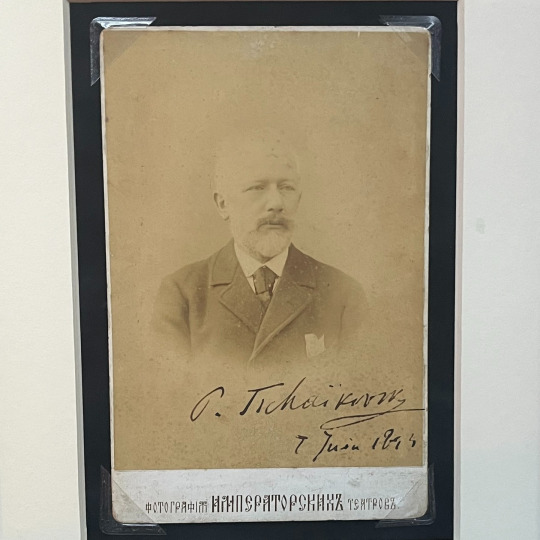
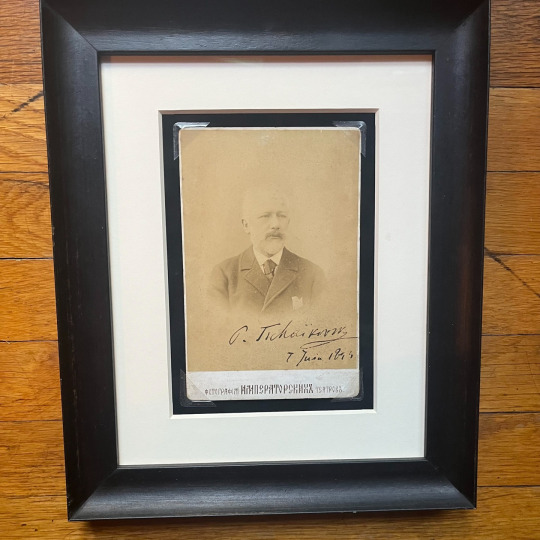
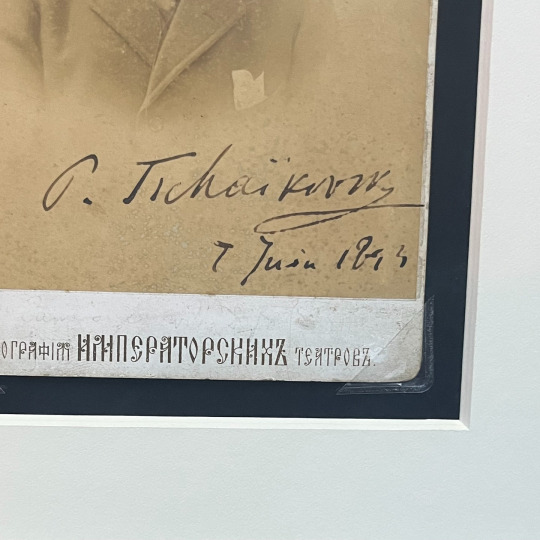
OTD in Music History: The immortal Pyotr Ilyich Tchaikovsky (1840 – 1893) is born in what is now the Udmurt Republic, a federal subject of Russia. Tchaikovsky is undoubtedly the most popular Russian composer of all time. Although he has sometimes drawn scorn from critics and academics, his music has always held great appeal for the general public because of its incredible melodic inspiration, lush (and often surprising) harmonies, and colorful orchestration. Although Tchaikovsky did not seriously begin studying music until his early 20s -- and although he died in his early 50s -- he composed prolifically and managed to produce 20 choral works, 11 overtures, 11 operas, 7 symphonies, 5 suites, 4 cantatas, 3 ballets, 3 piano concertos, 3 string quartets, a violin concerto, a string sextet, and more than 100 individual smaller songs and piano pieces. Tchaikovsky's work can admittedly be rather uneven in quality, but, as often as not, he achieved a remarkable unity of melodic and harmonic inspiration, dramatic content, and (sufficient) mastery of form -- and his finest masterpieces easily elevate him into the first rank of history's great "classical" composers. PICTURED: A nice 1890’s cabinet photograph of Tchaikovsky, which he signed and dated on June 7, 1893 – just five months after the world premiere of “The Nutcracker,” and just five months before his sudden and untimely death in November 1893. Per the date of the inscription, Tchaikovsky signed this photograph while he was visiting Britain (from May 25 – June 30, 1893) to receive an honorary Doctorate from Cambridge University. His distinguished musical colleagues Camille Saint-Saens (1835 – 1921), Max Bruch (1838 – 1920), Arrigo Boito (1842 – 1918), and Edvard Grieg (1843 – 1907) (who was not able to attend due to illness) were also awarded honorary Doctorates at the same ceremony, which took place on June 13th. A photograph of Tchaikovsky dressed up in his ceremonial garb and preparing to receive his Doctorate at the ceremony is included at the end of this photo set.
#Pyotr Ilyich Tchaikovsky#Pyotr Tchaikovsky#opera#classical music#music history#bel canto#composer#classical composer#classical studies#aria#Tchaikovsky#ballet#Swan Lake#The Nutcracker#Overture#classical musician#musician#Concerto#Romeo and Juliet#Eugene Onegin#The Queen of Spades#symphony#Mazeppa#Concert#music
19 notes
·
View notes